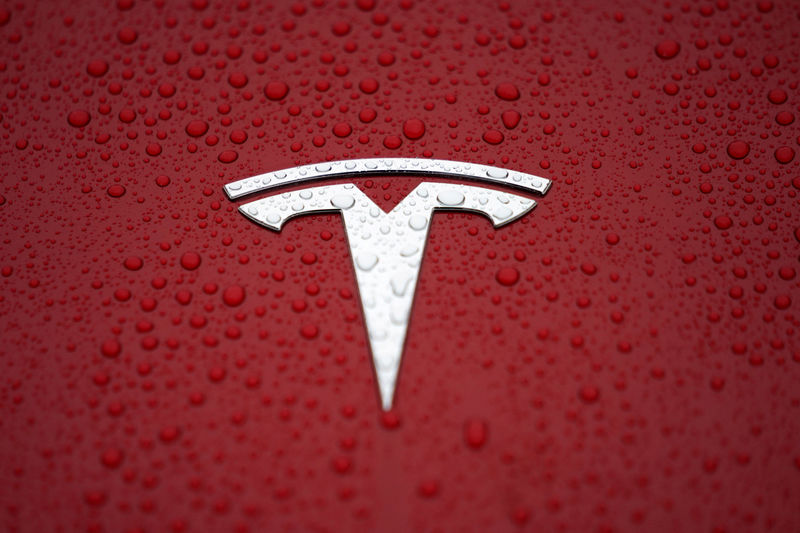Investing.com -- Tesla (NASDAQ:TSLA) shares fell around 2% in premarket trading Tuesday after Bank of America (NYSE:BAC) analysts downgraded the stock to Neutral from Buy.
While the bank raised its price target on the stock to $490 from $400, analysts caution that “execution risk is high and TSLA is trading at a level that captures much of our base case long-term potential from core autos, robotaxi, Optimus, and energy generation & storage.”
According to analysts led by John Murphy, Tesla’s robotaxi service offers the largest opportunity for the automaker, now accounting for roughly 50% of its valuation.
The service, expected to launch in 2025, could be valued at $420 billion in the US and over $800 billion globally. BofA’s analysis assumes Tesla will initially own and operate the fleet, though they anticipate the company will eventually allow third-party providers to participate.
While the robotaxi launch is expected to start slowly and feature elevated per-mile costs, Tesla’s long-term cost advantage over rideshare competitors like Uber (NYSE:UBER) and Lyft (NASDAQ:LYFT) is expected to be substantial “given the lack of a driver,” analysts said.
"With this sizable cost advantage, TSLA’s robotaxi service could offer rides at a much lower price to the consumer and still have higher margins,” they added.
The valuation of Tesla’s Full Self-Driving (FSD) technology is also significant, with BofA estimating it could reach $480 billion. BofA highlights that FSD is still in the early stages of monetization but notes increasing adoption, particularly among Cybertruck buyers, where uptake has risen to around 60% in 2024 from 22% in early 2023.
The firm projects that 23 million vehicles could be equipped with FSD by 2030, growing to 75 million by 2040. It also emphasizes that FSD could generate substantial EBIT annually and yield higher margins than Tesla’s core automotive business.
“Our FSD valuation doesn’t reflect potential upside from licensing to other OEMs,” analysts point out.
Looking forward, analysts see multiple catalysts that could drive Tesla’s stock, but execution risks remain elevated, contributing to the downgrade.
Key catalysts include the introduction of a low-cost model in the first half of 2025 and another new model later that year, the launch of the robotaxi service by mid-2025, and the ramp-up of Megapack production in Shanghai starting in the first quarter.
Other potential drivers include updates on FSD subscriptions, the scaling of Tesla’s humanoid robot Optimus, with a goal of 1,000 units by the end of 2025, and the risk of less favorable policy changes.
Further, BofA notes the possibility of a capital raise, which they view positively as it could accelerate growth.
